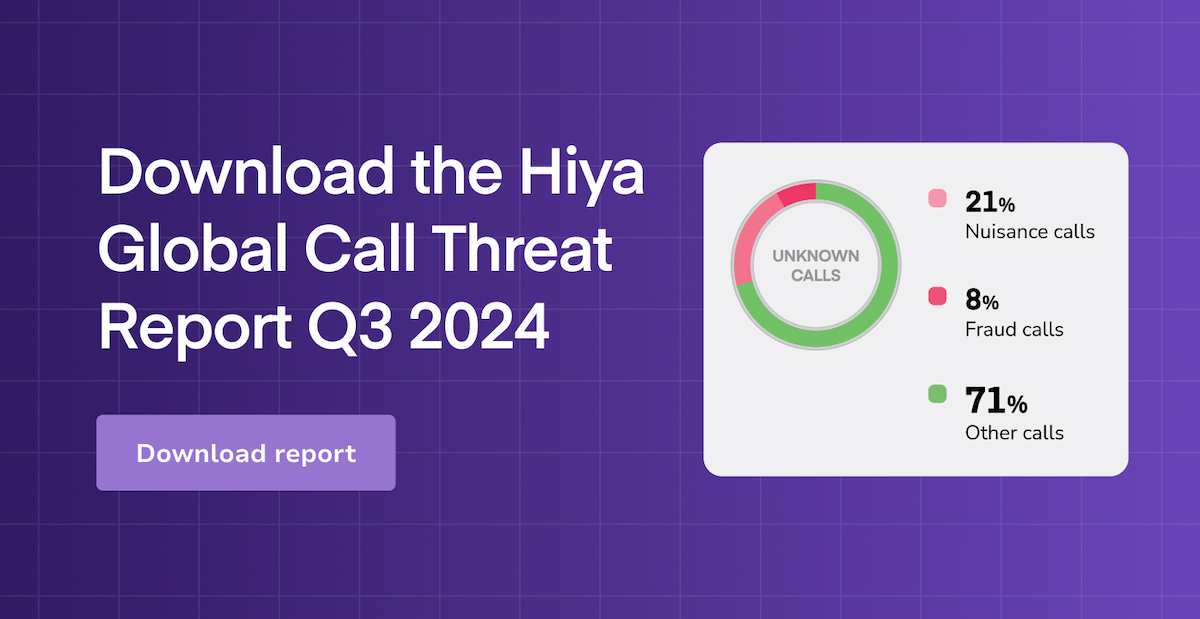
Consumers have very little trust in the voice call. In fact, 92% of consumers think unidentified calls are fraudulent, according to Hiya’s most recent State of the Call Report. It’s no wonder. The voice network is the only modern communication network where callers don’t identify themselves by default.
Today, our other communications networks are internet-era inventions: email, social media, apps such as Uber and Airbnb, etc. But the voice network was built in the early 20th century. On the voice channel, the default is to show just a phone number, which only lets the recipient know the municipality or county where a caller lived when they acquired the number — no other information!
This would be like introducing yourself by the geographic coordinates of the city you were born in. Or, when you send an email, instead of an email address, showing just part of the IP address of your childhood home. On any other channel, no one would trust someone who provided such little information about who they are. And clearly, consumers have the same reaction on the voice channel: when they’re only shown a phone number, they don’t pick up.
It’s time to rethink how we approach identity on the voice channel.
Rethinking identity
As an industry, we often think of identity as a caller name. But really, it’s so much more than that — it’s any information about the caller and their purpose that can inform the call recipient.
The major innovation in identity on the voice channel was the invention of caller ID name display. This enabled people to associate a name with a phone number. Although display technology has improved, decades later, caller ID remains essentially the same — callers can associate their name or business with a phone number. However, the default is still just to show a phone number, making it impossible for call recipients to know if a call from an unidentified number is a spam, fraud, nuisance or a wanted call.
How identity should work
Consumers hate missing important calls, but they are fed up with spam and fraud calls and don’t want to risk picking one up. In order for consumers to pick up calls — and stop missing important ones — they need as much context as possible about the call.
There’s a wide range of context that can be provided to the consumer, including:

Phone number alone – When an incoming call shows just a phone number, there’s very little context. There’s no reason for the recipient to trust a call with just a phone number.
Wanted or unwanted call – When a call shows up with a spam label, at least the recipient knows that it’s likely to be an unwanted call. That gives slightly more context, but it still doesn’t tell them who is calling — and each person defines wanted and unwanted calls differently.
Type of caller – This type of call labeling provides the recipient with the category of the call. For example, the phone might display “survey,” “political,” or “non-profit.” Those labels give additional context, but the consumer still doesn’t know who the caller is. One consumer might want to make a charitable contribution, while another might consider a call from a non-profit to be spam.
Caller identity – This type of call shows up with the caller’s name, and may even include a logo. By knowing who is calling, the recipient should know whether the call is wanted or unwanted. There’s a high level of trust in the call when the recipient knows who is on the other end.
Caller purpose – This would be the ideal information to provide. When the display on the screen shows both the caller name and purpose, then the recipient knows exactly who is calling and why. With this information, the recipient should have no doubt as to whether they want to answer the phone. Calls with this much information are trusted.
 The screen display on the left shows just the phone number, providing little context. The display on the right provides more context, showing the company’s name, phone number, logo and reason for the call.
The screen display on the left shows just the phone number, providing little context. The display on the right provides more context, showing the company’s name, phone number, logo and reason for the call.
More information is always better
The default should always be to give the consumer as much context as possible.
Other communications networks have a concept of a profile: Social media apps, Airbnb, Uber, etc. The more information a participant in the network shares, the more complete their profile is and the more trusted they are. On the voice channel, we need to evolve to show as much information as possible.
The right solution for the consumer
The success of the voice channel depends on it serving consumer needs. This is the best solution for the consumer, and it’s possible today. Now, we just need to act.
If you would like to see how Hiya can help you provide the maximum amount of context for your customers, explore our Hiya Registration and Hiya Connect Branded Call offerings.








